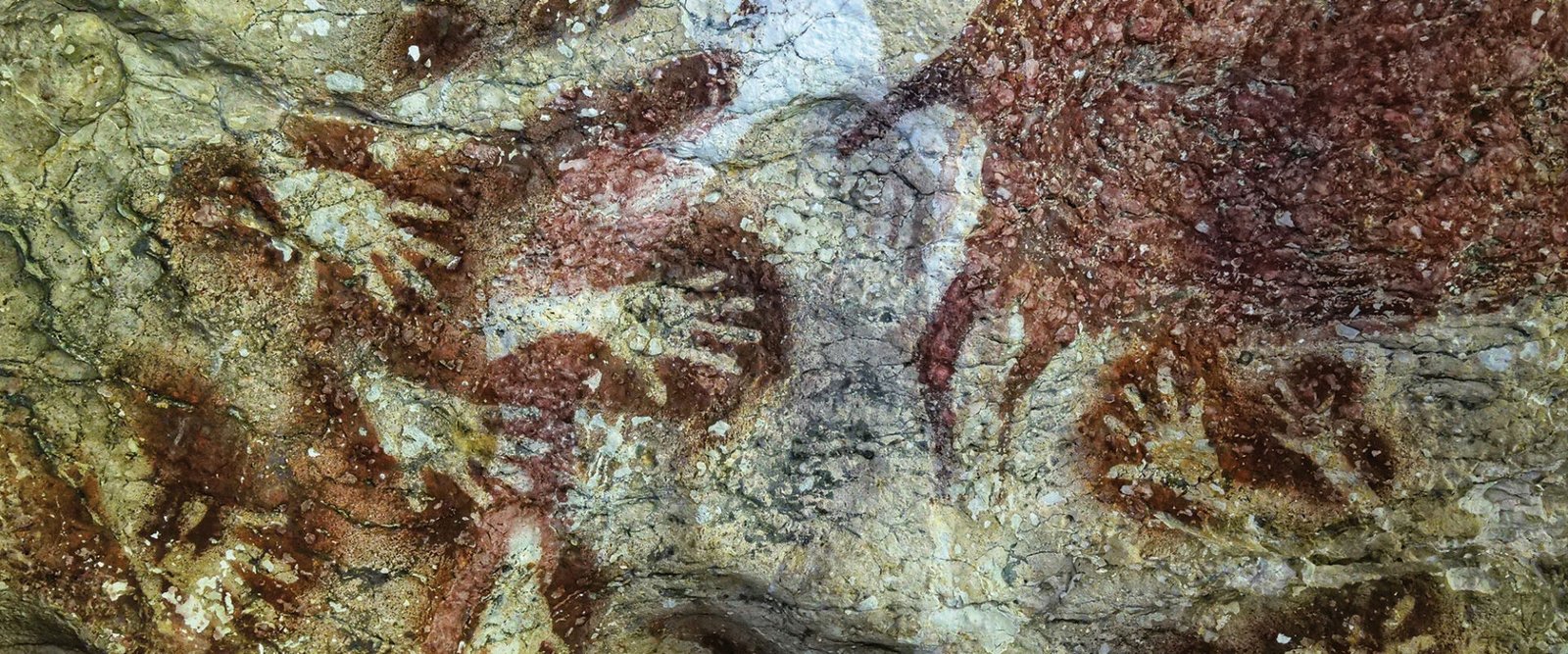Word: Ayu Arman
Indonesia is not only blessed with natural beauty but also holds extraordinary prehistoric cultural heritage. Among these treasures are caves adorned with rock paintings that serve as tangible evidence of humanity’s long journey in expressing art and leaving traces of its existence. Every stroke on the cave walls is more than just an image—it is a story passed down through generations.
This cave has an inner chamber about 24 meters deep and 12 meters high. Its high ceiling slopes toward the back, creating a quiet, mysterious atmosphere. Inside, the natural process of stalagmites and stalactites forming through water seepage and travertine is clearly visible. On the cave walls, various rock art paintings appear, marking the presence of early human creativity.
In the northern chamber, there is a painting of a jumping deer-pig. Nearly every corner of the walls is filled with hand and foot stencils, with about 25 handprints still clearly visible. Other drawings include boats, canoes, and red markings that are no longer identifiable. Archaeological records note that in addition to paintings, the cave also contained human bones and teeth, seashells, plain pottery fragments, and geometric ornaments.
The presence of these artworks and artifacts is nature’s testimony that the cave once served as a dwelling for humans in ancient times. In world history, prehistoric caves are often found in regions once inhabited by early humans. Neanderthals in Europe, for example, lived in caves about 100,000 years ago, followed later by Cro-Magnon humans around 40,000 years ago. The Cro-Magnons are regarded as the world’s first artists, capable of expressing their creativity through paintings, carvings, and engravings on cave walls.
In Indonesia, cave paintings have been found in Papua, Maluku, East Nusa Tenggara, Kalimantan, and Sulawesi. The earliest report was made by J. van Olderborgh in 1882 in Berau Bay, Papua, followed by D.F. van Braam Moris (1884), E. Metze (1885), and the Frobenius Expedition (1937–1938). Subsequent studies in South Sulawesi were conducted by Paul and Fritz Sarasin in the early 20th century, and later by researchers such as van Stein Callenfels, Heekeren, and R.P. Soejono.
Intensive research in Sulawesi has shown that caves in Maros and Pangkep contain the oldest paintings in Indonesia, dated by C-14 methods to between 10,500 and 5,000 years ago. The most common images are hand stencils. The technique is simple: a hand is placed against the cave wall, then pigment is blown or sprayed around it, creating a “negative handprint.” Conversely, positive handprints were made by applying pigment directly onto the palm and pressing it against the wall.
This cultural heritage confirms that Indonesian caves are silent witnesses to the long journey of early humans. Hand stencils, animal figures, and boat drawings are not merely artistic expressions but also evidence of life, spirituality, and how ancient humans communicated with their world.
To preserve and protect these ancient caves is to safeguard humanity’s collective memory. This heritage reminds us that art, culture, and knowledge have accompanied human life for thousands of years. With continuous protection and research, these caves will remain not only as historical witnesses but also as sources of inspiration and education for future generations.

